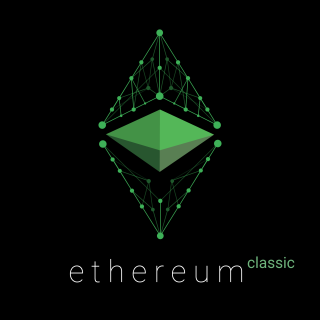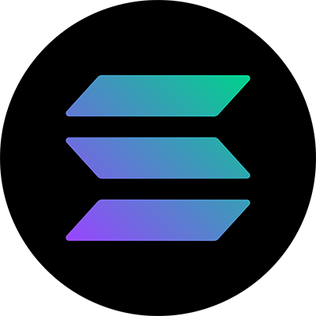
Kevin Abosch is an Irish conceptual artist and pioneer in cryptoart known for his works in photography, blockchain, sculpture, installation, AI and film. Abosch's work addresses the nature of identity, value and human currency and has been exhibited throughout the world, often in civic spaces, including The Hermitage Museum, The National Gallery of Ireland, The National Museum of China, The Irish Museum of Modern Art, The Museum of Contemporary Art Vojvodina, The Bogotá Museum of Modern Art, ZKM, Galerie nationale du Jeu de Paume, and Dublin Airport.

Vitaly Dmitrievich Buterin, better known as Vitalik Buterin, is a Russian-Canadian computer programmer, and founder of Ethereum. Buterin became involved with cryptocurrency early in its inception, co-founding Bitcoin Magazine in 2011. In 2014, Buterin deployed the Ethereum blockchain with Dimitry Buterin, Gavin Wood, Charles Hoskinson, Anthony Di Iorio, and Joseph Lubin.

Ethereum is a decentralized blockchain with smart contract functionality. Ether is the native cryptocurrency of the platform. Among cryptocurrencies, ether is second only to bitcoin in market capitalization. It is open-source software.
A decentralized autonomous organization (DAO), sometimes called a decentralized autonomous corporation (DAC), is an organization managed in whole or in part by decentralized computer program, with voting and finances handled through a blockchain. In general terms, DAOs are member-owned communities without centralized leadership. The precise legal status of this type of business organization is unclear.

The DAO was a digital decentralized autonomous organization and a form of investor-directed venture capital fund. After launching in April 2016 via a token sale, it became one of the largest crowdfunding campaigns in history.

Ethereum Classic is a blockchain-based distributed computing platform which offers smart contract (scripting) functionality. It is open source and supports a modified version of Nakamoto consensus via transaction-based state transitions executed on a public Ethereum Virtual Machine (EVM).
Krista Kim is a Canadian-Korean contemporary artist whose works frequently use light, digital technology and sound. Kim produced a number of touring installations and displays, along with other works which have been sold as non-fungible tokens (NFTs), some in partnership with major corporations.

CryptoKitties is a blockchain game developed by Canadian studio Dapper Labs. The game allows players to buy, sell, and create NFTs using on Ethereum. These NFTs represent virtual cats. The game's popularity in December 2017 congested the Ethereum network, causing it to reach an all-time high in the number of transactions and slowing it down significantly.
Cryptocurrency and crime describes notable examples of cybercrime related to theft of cryptocurrencies and some of the methods or security vulnerabilities commonly exploited. Cryptojacking is a form of cybercrime specific to cryptocurrencies that has been used on websites to hijack a victim's resources and use them for hashing and mining cryptocurrencies.
Video games that include elements that use blockchain technologies, including cryptocurrencies and non-fungible tokens (NFTs), allow players to buy, sell, or trade in-game items with other players. The game publisher takes a fee from each transaction as a form of monetization. A subset of these games are also known as play-to-earn games because they include systems that allow players to earn cryptocurrency through gameplay. Blockchain games have existed since 2017, gaining more widespread attention from the video game industry in 2021. Several AAA publishers have expressed intent to include this technology in the future. Players, developers, and game companies have criticized the use of blockchain technology in video games for being exploitative, environmentally unsustainable, and unnecessary.

A non-fungible token (NFT) is a unique digital identifier that is recorded on a blockchain, and is used to certify ownership and authenticity. It cannot be copied, substituted, or subdivided. The ownership of an NFT is recorded in the blockchain and can be transferred by the owner, allowing NFTs to be sold and traded. NFTs can be created by anybody, and require few or no coding skills to create. NFTs typically contain references to digital files such as artworks, photos, videos, and audio. Because NFTs are uniquely identifiable, they differ from cryptocurrencies, which are fungible.

Dai is a stablecoin on the Ethereum blockchain whose value is kept as close to one United States dollar (USD) as possible through a system of smart contracts and the decentralized participants those contracts incentivize to perform maintenance and governance functions. Dai is maintained and regulated by MakerDAO, a decentralized autonomous organization (DAO) composed of the owners of its governance token, MKR, who may propose and vote on changes to certain parameters in its smart contracts in order to ensure the stability of Dai.

CryptoPunks is a non-fungible token (NFT) collection on the Ethereum blockchain. The project was launched in June 2017 by the Larva Labs studio, a two-person team consisting of Canadian software developers Matt Hall and John Watkinson. The experimental project was inspired by the London punk scenes, the cyberpunk movement, and electronic music artists Daft Punk. The crypto art blockchain project was an inspiration for the ERC-721 standard for NFTs and the modern crypto art movement, which has since become a part of the cryptocurrency and decentralized finance ecosystems on multiple blockchains.

0x is an open-source, decentralized exchange infrastructure that enables the exchange of tokenized assets on multiple blockchains. Developers can use 0x to incorporate exchange functionality into their applications, and market makers can use 0x to create markets for cryptocurrencies and tokens. ZRX, an Ethereum ERC-20 token, is the native governance and staking token of 0x. Individuals who own ZRX can vote on protocol changes and stake their tokens to earn liquidity rewards in Ether (ETH). The project's creator and core developer is 0x Labs.

Axie Infinity is a non-fungible token-based online video game developed by Vietnamese studio Sky Mavis, known for its in-game economy which uses Ethereum-based cryptocurrencies. It has been called 'a pyramid scheme that relies on cheap labor from countries like the Philippines to fuel its growth.'
A rare Pepe or RarePepe is a variation on the "Pepe the Frog" internet meme, itself based on a character created by Matt Furie. The related Rare Pepe crypto project, created by various artists worldwide between 2016 and 2018, was based on the aforementioned meme and traded as non-fungible tokens (NFTs) recorded on the CounterParty platform. A total of 1,774 official cards were released for the project across 36 series.

Solana is a blockchain platform which uses a proof-of-stake mechanism to provide smart contract functionality. Its native cryptocurrency is SOL.
Curio Cards are collectible digital artworks located on the Ethereum blockchain. Created in 2017, Curio Cards are commonly viewed as the first digital art collectibles on the Ethereum blockchain. In October 2021, a complete collection of Curio Cards, including the card "17b" misprint, was sold for ETH393 ($1,267,320) at the Christie's Post-War to Present auction.

Polygon is a blockchain platform which aims to create a multi-chain blockchain system compatible with Ethereum. As with Ethereum, it uses a proof-of-stake consensus mechanism for processing transactions on-chain. Polygon's native token is named MATIC. Matic is an ERC-20 token, allowing for compatibility with other Ethereum cryptocurrencies.













